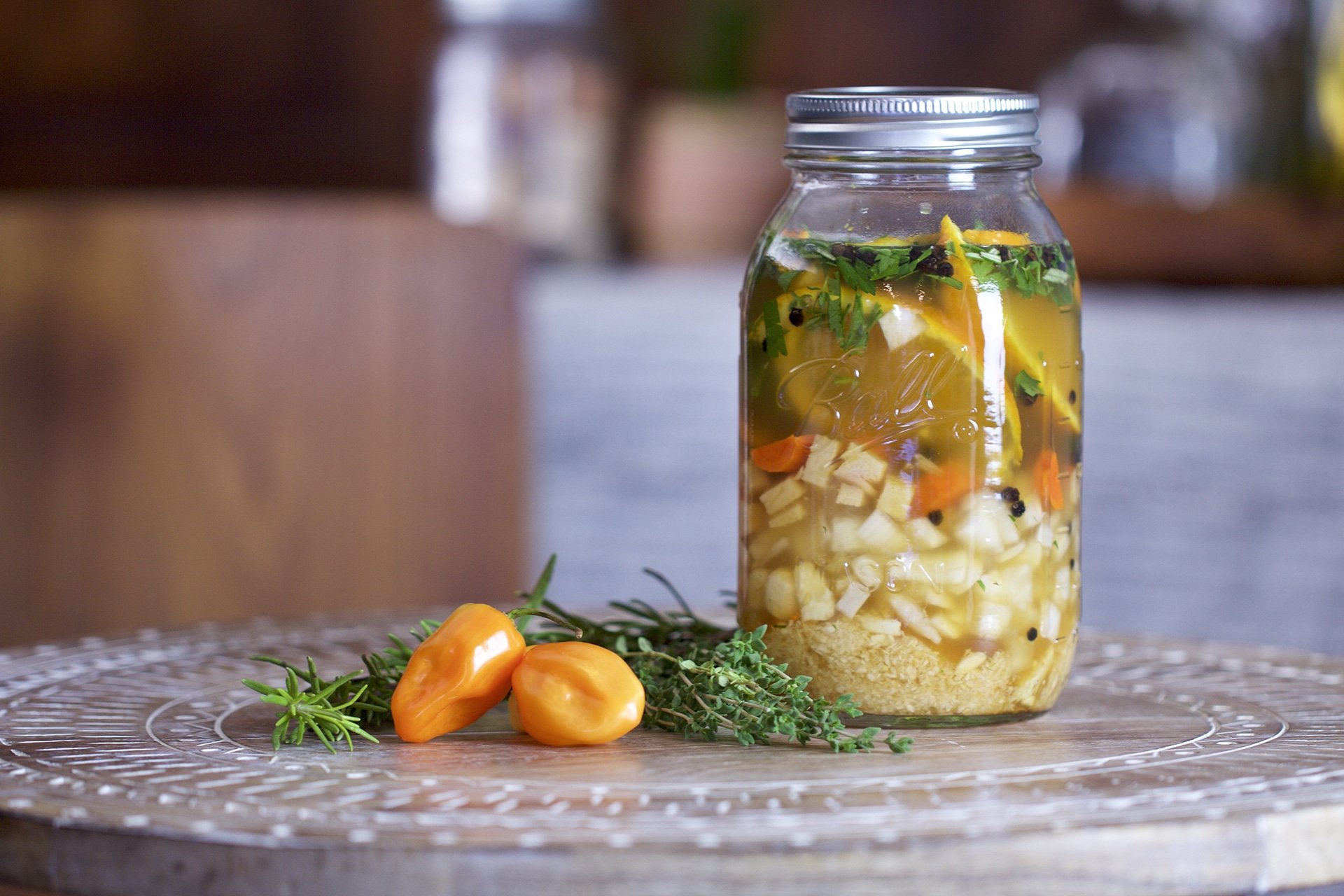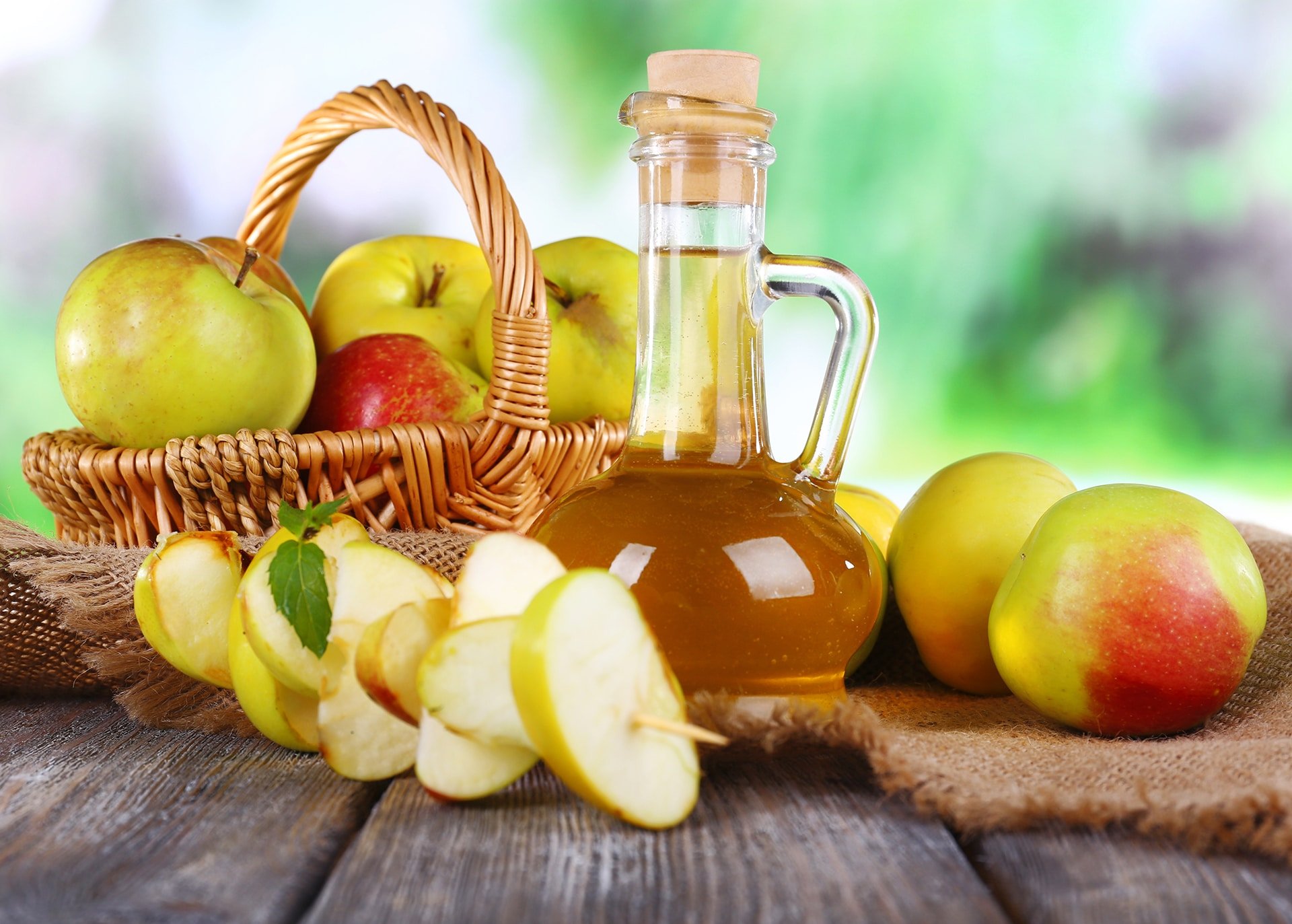My interest in making homemade shrubs and oxymels started slowly and then exploded into a full on obsession that had us drinking gallons of this sweet and tart, nutrient-dense herbal treat all year long.
And it all began with the recipe below. Consider this fair warning!
But let’s back up a bit… what’s a shrub? Oxymel?
Shrubs and oxymels are slightly different variations of a sweetened vinegar-based mixture. The result is a tart, tangy, nutrient-dense herbal preparation with a sweetness that rounds out the flavors.
A Long History of Use
People have made these nutrient-dense herbal preparations for thousands of years — both as delicious beverages and as medicine. The School of Hippocrates recommended oxymels 2,000 years ago as a way to address congested coughs. People historically added vinegar to water because it inhibited pathogenic growth. I learned from Emily Han in her book Wild Drinks and Cocktails that as long as 4,000 years ago Babylonians were fortifying their water with date and raisin vinegar.
Oxymels tend to be more medicinal in nature and typically involve infusing herbs in vinegar and honey. (Oxymel means “acid honey.”) Shrubs more often include fruit and a sweetener. The word shrub may conjure greenery or a small tree for us plant-focused folks, but this word actually comes from an Arabic syrup, sharbât.
Both vinegar and honey are popular ways to extract the many gifts of herbs. I think of shrubs and oxymels as two nutrient-dense herbal preparations walking that line between medicine and food as medicine.
A Popular Oxymel Recipe
Let’s take Fire Cider as an example. Fire Cider is a traditional nutrient-dense herbal preparation that Rosemary Gladstar popularized several decades ago. It commonly combines horseradish, ginger, garlic, onions and other herbs with vinegar and honey. Fire Cider is technically an oxymel. You can use Fire Cider to bolster your vitality and keep you healthy, to address symptoms of a cold or flu, or as salad dressing. See? Very versatile!
While Fire Cider is known for its spicy flavor, many shrubs and oxymels are very cooling in nature due to the vinegar content. One of my favorite times to enjoy these drinks is when I am feeling hot and parched after working outside on a warm spring or summer’s day. Shrubs and oxymels quench your thirst and noticeably cool you down.
Hydrate and Nourish
One way to think of your homemade shrubs and oxymels is like a sports drink. But of course that isn’t a very fair comparison. Commercial sports drinks often contain artificial coloring and flavors, and they tend to not actually be a healthy drink.
On the other hand, homemade shrubs and oxymels offer the medicinal benefits of the herbs and fruits you use. They often have lots of antioxidants and can be full of other nutrients, such as minerals, which are readily extracted with vinegar. These nutrient-dense herbal drinks also beautifully capture the aromatic qualities of herbs, which means they are often wonderful beverages for digestive health as well.
Let’s take a look at the herbs in the recipe below.
Tulsi Leaf (Ocimum sanctum)
Tulsi, also called holy basil, is a sacred herb in parts of India and in Ayurvedic medicine. This herb is quickly growing in popularity in North America as an adaptogenic herb that helps provide mental clarity and soothe the nervous system. Entire books have literally been written about this powerful plant! Tulsi can also modulate the immune system, protect the heart, and promote digestion. To learn more about tulsi, visit the plant profiles section of our community membership site, HerbMentor.
Hibiscus Calyx (Hibisicus sabdariffa)
Originally from Africa, hibiscus is now a treasured plant around the world. It is especially common in the Caribbean where it is referred to as Jamaica (pronounced hah-MY-kah). We typically work with the calyx of the hibiscus flower, which has a tart taste that turns beverages and foods a deep red color. Hibiscus has many gifts, and it is especially skilled at protecting heart health.
Dandelion Root (Taraxacum officinale)
Because vinegar excels at extracting minerals from herbs, I often like to include a bit of mineral-rich plants in my oxymel and shrub recipes. Dandelion root is a favorite nutrient-dense root and a famous ally for the liver! It’s loaded with minerals like calcium, manganese, potassium, and more.
Vinegar
Any type of vinegar can be used for these preparations, but I most often reach for apple cider vinegar. It’s plentiful, affordable, and (if you buy the raw unpasteurized vinegar) it’s especially nutrient-dense. As I mentioned, vinegar is cooling in nature and excels at extracting minerals from plants.
Avoid super cheap vinegar that is labeled “apple cider flavored.” I also avoid white distilled vinegar for beverages and instead reserve it for cleaning.
If you do use the raw and unfiltered apple cider vinegar you may see a “mother” develop. This is a harmless gooey blob that can cover the surface of your preparation. It can be removed and composted.
Honey
Technically any type of sweetener can be used in a shrub or oxymel. I love honey best because it’s local to me (I can get it directly from my dear friend who lovingly tends to her hives), and because of its many health benefits. Honey can modulate the immune system and is incredibly nutrient-dense.
If you don’t use honey you can experiment with other sweeteners of your choosing.
Tulsi and Hibiscus Oxymel: a Nutrient-Dense Herbal Drink
This tangy and sweet, nutrient-dense herbal drink is a wonderful way to refresh after spending time in the sun. I most often like to add 1–2 tablespoons to a glass of sparkling water. You can can make it into fancy cocktails and mocktails, or you can use 1 part oxymel to 2 parts olive oil to make your own delicious salad dressing (e.g., 1 tablespoon oxymel to 2 tablespoons olive oil or to taste).
What you’ll need…
- 3/4 cup dried tulsi leaves finely cut/sifted (20 grams)
- 2 tablespoons dried hibiscus (5 grams)
- 1 tablespoon dried dandelion root (7 grams)
- 1/3 cup honey
- 1 cup apple cider vinegar
- Add the tulsi, hibiscus, and dandelion roots to a clean pint-sized jar.
- Next add honey, and then fill the jar with apple cider vinegar.


- Cover with a glass or plastic lid (avoid using a metal lid as it will corrode).
- Shake well. After 24 hours open the lid and add more vinegar if necessary.
- Let it steep for 2 weeks, continuing to shake it every day or so, and then strain when ready. If you prefer it sweet, you can add more honey to your oxymel at this stage.
- Store in the fridge and use within 6 months. Discard if mold develops.
Now I’d love to hear from you!
Do you already make nutrient-dense herbal shrubs and oxymels?
What are some of your favorite combinations?
Please share in the comments below.






















This sounds wonderful. Come on warm weather!! I want to try this!
Anxious to try this! Can I sub anything else for the hibiscus? I don’t have that on hand. Thanks!
You can omit it from the recipe. I imagine rosehips could also be nice.
Yes! I have rosehips! Thank you.
I am very new to all this, do you step it on the counter, in the sun, or? Refrigerate after the two weeks of steeping? Thanks!
You can steep it on the counter away from sunlight. You don’t need to refrigerate when using dried plants (but I would if using fresh). I often keep my oxymels in the fridge because I like them cold.
Thanks for this! I am wondering what your second choice of vinegar might be? I am allergic to apples.
You can use any type of vinegar, the taste of course varies. Champagne vinegar is nice. Look for something with at least 5% acidity to ensure preservation.
Can I use fresh tulsi instead of dried?
I love using fresh tulsi! You would need to use more fresh than dried and keep it refrigerated. Enjoy!
A note of caution: I used to drink a cup of tea with only a tablespoon of ACV daily, but that had negative side effects…I began having an inordinate amount of cavities. Discovered that ACV in this drink was the cause. Very hard on the teeth and gums!
Ohhhh! I can see how that can happen. Ty!
How would kombucha that is very sour (almost vinegar) work at extracting nutrients? I always have some in my SCOBY hotel (storage container for extra SCOBYs) that I can use from time to time.
I have never extracted plant constituents with kombucha, but if it’s at a vinegar stage I imagine it would work similarly to ACV. To ensure the preservation of your oxymel, you want to make sure that the acidity of the vinegar is at least 5%. :)
Therefore, when applied to the skin, it could eliminate bruises to spots on the skin. However, the researchers comment that it has not been possible to show that vinegar can have such effects, nor has it been shown that it is capable of providing other benefits.
1. Does it remove age spots?
Some studies argue that the alpha hydroxy acids in apple cider vinegar, in certain doses, can provide some benefits to the skin. However, it would be necessary to delve into this topic and carry out more clinical studies.
For now, the use of apple cider vinegar as a facial toner (diluted or not, alone or in combination) is not recommended.
2. Does it reduce acne and pimples?
Although it is believed that this liquid can ‘cleanse’ the face and ‘sweep away’ excess oil, it does not really help reduce impurities (or prevent future ones) . In reality, what it does is mistreat the skin, irritate it and further expose it to various discomforts.
Therefore, despite popular claims, apple cider vinegar is NOT a miracle cure for acne or oily skin . The benefits attributed to malic acid are not scientifically proven or endorsed.
3. Does it stimulate circulation?
Applying apple cider vinegar to the face will not activate circulation , improve blood flow, or rejuvenate the face in any way. This is all a myth.
Keep in mind that if there were compounds in apple cider vinegar capable of providing skin health benefits, they would not work in any way. There should be certain conditions for them to be able to act in a specific way.
So your saying that ACV is not what most people think it is ? Possibly useless ?
All of what your posting has to do with applying ACV to your facial skin. This hasn’t anything to do with Rosalee’s post which is for internal use. You drink a shrub after all.
I make a blackberry shrub. I like putting some shrub in a glass then topping it off with sparkling water to make a spritzer type drink.
That sounds delicious!
Would love to try this immediately and have so many dried herbs but not tulsi! What would be a good sub for now? Lemon balm? Nettle leaf? Meadowsweet? Mint? Thanks Rosalee!
The possibilities are endless! I would try something aromatic that you enjoy the taste of. Lemon balm could be a good choice.
Beautiful. ??
Why would there be mold growth (possibly) when Honey and Vinegar are used. I thought Honey and Vinegar were preservative products as well. Am I wrong to assume that? Thanks. I love your books and recipes, and younare easy to learn from. Debbie
Hi Debbie, thank you for your question. :) Though honey and vinegar are preservatives, sometimes mold can still grow if an oxymel’s water content is too high or if the oxymel is introduced to microbes — for example, via a dirty spoon, etc. Also, some of the environments we live in just make things more prone to mold growth.
Thanks so much for this! I’ve always wanted to try shrubs & oxymels. Just ordered some dried hibiscus flowers & have also decided to plant hibiscus! Love all your recipes, books & writings! <3
Does honey add any health benefits to the oxymel, or is it just for a more pleasant taste? Does it extract any nutrients that the vinegar does not?
Great questions! Honey not only adds sweetness but also is nutritive and demulcent (moistening to tissues). I don’t know exactly which constituents the honey will extract that the vinegar won’t, but each extracting liquid tends to pull different nutrients/constituents from the plants. :)
Tulsi and Jamaica are my favorite herbs to add to my Water Kefir that I drink daily. I also often add Moringa leaves to the mix. I feel it’s a powerhouse of a drink.
Any recommended substitute for tulsi? I have some comfrey coming up, could that work?
Great question! I would personally avoid comfrey in this recipe and opt to use an aromatic herb like basil or mint.
The Arizona desert doesn’t offer true dandelion but we do have copious amounts of sow thistle. Can this be substituted? Thank you
Thank you for asking about sow thistle (Sonchus spp.). I know that some of the Sonchus spp. are edible, but I am not sure about their uses.
I just received a bag of beautiful sumac from Healing Spirits Herb Farm (in Avoca New York) Might this work as a substitute fir the hibiscus? I’m thinking because it is tart and a bright red color?
Hi Jennifer, I have not combined sumac (Rhus spp.) with tulsi yet. But sumac berries are often used in drinks so I recommend trying it! :)
I checked out Mountain Rose Herbs and they don’t have Ocimum sanctum available, but they have 2 other tulsi (Ocimum tenuiflorum and Ocimum gratissimum) are these a reasonable substitute? Thanks Rosalee! I love your Book Alchemy of Herbs!
I was wondering the same thing. The photo shows Tulsi, Krishna, but I have Rama on-hand. I was wondering if they are interchangeable.
Thanks for asking! All of these tulsi species will have slightly different flavors and properties, and you can use any of them in this oxymel recipe. Enjoy!
Thanks for this teaching! I made this yesterday and it would need a LOT more vinegar to resemble your photo above. The oxymel I made does not have all that liquid on top. Would it be best to add enough vinegar to create a lot of liquid above the herbs? It would mean adding probably another 1/2 to 3/4 cup.
Hi Anne, yes it’s typically best to make sure that there’s at least a little bit of liquid covering the top of your herbs. If you add more vinegar, I recommend also adding more honey to maintain the 1:3 ratio between the honey and vinegar.
This looks so yummy! I’ve got 4 “rose of sharon” trees on the south side of my house. I’ve read that these are hibiscus. And I’ve read that these flowers are just hibiscus flowers and can be used for tea, but all that I’ve read strikes me as not-that-confident in making these claims. What is the relationship between rose of sharon and hibscus? Do they share a genus, or perhaps are just varieties? But I know this can make a difference when making yummy herbal concoctions. You thoughts, Rosalee?
Hi Mama Rachael,
There are many different species in the Hibiscus genus. It is best to look at the latin name. Rose of Sharon usually refers to
Hibiscus syriacus. While hibiscus (the herb Rosalee used in her recipe) is Hibiscus sabdariffa. So they are related but different plants. Hope that helps!
I make shrubs for cocktail mixers but they are so tangy and delicious, that they are super refreshing just topped w/ a little seltzer. My favorite so far has been Bosc pear w/ champagne vinegar – took 2 months (1 month on the sugar and 1 month in the vinegar). I did use white sugar, but I have plenty of local honey now so I’ll try it that next. The longer they age the more they mellow.
Mixed w/ Mezcal and a little mango nectar, then a pink salt rim…mmmmm. Flavor bomb!
Hi Marikac,
I am so glad that you enjoy making shrubs for cocktail mixers!